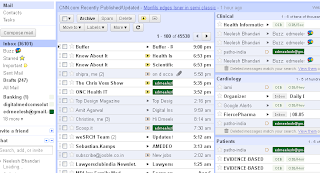Also check out this PowerPoint about Top 10 takeaways from the TEDMED 2011 gathering:
Related articles
- Exploring What We Don't Know at TEDMED 2011 (rwjfblogs.typepad.com)

FDA will soon have to reconsider their positions as Tele-diagnosis becomes mainstream.your device has a new indication for displaying medical images for diagnostic use on a mobile/portable device…that alters the diagnostic effect, impacting safety and effectiveness, and is therefore a new intended use.Furthermore, your device has new technological characteristics that could adversely affect safety and effectiveness and raise new types of safety and effectiveness questions…< unquote>
| AWARD CATEGORY | WINNERS |
| IIndia's most preferred Hospital - The Viewers’ Choice Awards | Apollo Hospital |
| India's Best Multi Specialty Hospital | AIIMS - New Delhi |
| India's Best Multi Specialty hospital - First Runner Up | Christian Medical College – Vellore |
| India's Best Multi Specialty hospital - Second Runner Up | Apollo Hospital - Chennai |
| Specialty Hospital -Cardiology | Narayana Hrudayalaya – Bangalore |
| Specialty Hospital - Gynecology | Mayflower Women’s Hospital - Ahmedabad |
| Specialty Hospital - Oncology | Tata Memorial Hospital Mumbai |
| Specialty Hospital - Ophthalmology | Sankara Nethralaya – Chennai |
| Specialty Hospital - Pediatrics | Rainbow Children’s Hospital - Hyderabad |
| Most Socially Responsible Hospital | Christian Medical College – Vellore |
| Commendation for driving affordable and quality healthcare for all | Dr. Devi Shetty |
| Commendation for enabling a healthier India | Bill and Melinda Gates Foundation |
Every patient with important cardiovascular disease is evaluated, at some point, with an echocardiogram as the technique extends beyond its historical use only as an imaging tool. The echocardiography service is now the most important for hemodynamic and physiologic assessments, the study of myocardial mechanics, and increasingly clinically critical three-dimensional display of anatomy. In my opinion, however, what has really altered the workplace for the echocardiographer are those advances that involve collaboration with others during structural interventions.
The variety, complexity, and rapidly-increasing numbers of these collaborative interactions impact the practices of physician echocardiographers, virtually all of whom have other clinical duties. For sonographers the laboratory workflow is increasingly unpredictable.